Introdução aos Pós Metálicos
E se eu dissesse que o segredo por trás daqueles motores de foguete rugindo não é apenas o combustível, mas os próprios materiais de que são feitos? Sim, você ouviu direito! Pós metálicos, aquelas minúsculas partículas de felicidade metálica, estão no coração de motores de foguete de alta temperatura.
Mas o que exatamente são pós metálicos e por que são tão cruciais? Imagine um metal tão finamente moído que se assemelha a uma nuvem de poeira. Isso é pó metálico para você! Mas não deixe que seu tamanho minúsculo o engane. Esses pós são os blocos de construção de alguns dos componentes mais resistentes ao calor, duráveis e de alto desempenho da indústria aeroespacial.
Seja níquel, titânio, alumínio ou mesmo alguns dos metais refratários mais exóticos, cada tipo de pó metálico traz seu conjunto exclusivo de propriedades para a mesa. Esses pós não são apenas materiais quaisquer; eles são projetados com perfeição, projetados para suportar os rigores das viagens espaciais e além.
Agora, vamos mergulhar mais fundo nos tipos específicos de pós metálicos usados em motores de foguete de alta temperatura e ver como eles contribuem para o próximo salto gigante para a humanidade.
Tipos de Pós Metálicos Usados em Motores de Foguete de Alta Temperatura
Quando se trata de motores de foguete, nem todos os pós metálicos são criados iguais. Cada tipo tem suas propriedades distintas que o tornam adequado para diferentes partes do motor. Vamos explorar alguns dos principais players neste jogo de alto risco.
- Pós à base de níquel
- NiCrMo (Níquel-Cromo-Molibdênio): Conhecido por sua excelente resistência à corrosão e estabilidade em altas temperaturas, o NiCrMo é frequentemente usado em câmaras de combustão e pás de turbina.
- Inconel 718: Uma superliga que pode suportar temperaturas de até 700°C, o Inconel 718 é altamente valorizado por sua resistência à fluência e capacidade de manter a resistência mecânica em ambientes extremos.
- Pós à Base de Titânio
- Ti-6Al-4V: Esta liga é uma superestrela na indústria aeroespacial devido à sua incrível relação resistência-peso. É perfeito para componentes estruturais que exigem leveza e durabilidade.
- Ti-Al-Nb (Titânio-Alumínio-Nióbio): Conhecida por sua resistência à oxidação e resistência em altas temperaturas, esta liga é frequentemente usada na construção de carcaças de motores.
- Pós à Base de Alumínio
- AlSi10Mg (Alumínio-Silício-Magnésio): Leve, mas forte, o AlSi10Mg é comumente usado para fabricar tanques de combustível e outros componentes estruturais em motores de foguete.
- AlCu4Mg1 (Alumínio-Cobre-Magnésio): Com excelente usinabilidade e condutividade térmica, esta liga é frequentemente escolhida para trocadores de calor e sistemas de resfriamento.
- Pós de metal refratário
- Tungstênio (W): O ponto de fusão do tungstênio de 3422°C o torna um candidato de primeira linha para uso em bicos e outras áreas de alta temperatura do motor do foguete.
- Molibdênio (Mo): Outro metal refratário, o molibdênio é usado em componentes que devem suportar alta tensão e calor sem deformar.
- Pós à Base de Cobalto
- CoCrMo (Cobalto-Cromo-Molibdênio): Esta superliga é particularmente conhecida por sua resistência ao desgaste e é usada em rolamentos e vedações de alta temperatura.
- Stellite 6B: Uma liga de cobalto-cromo que oferece excelente resistência ao calor e à corrosão, tornando-a ideal para sedes de válvulas e válvulas de escape.

Composição e Propriedades de Pós Metálicos de Alta Temperatura
Características Principais dos Pós Metálicos em Motores de Foguete
O que torna esses pós metálicos os super-heróis do mundo dos motores de foguete? Tudo está em sua composição e propriedades. Vamos detalhar as principais características que tornam esses materiais indispensáveis:
- Resistência ao calor: A capacidade de suportar altas temperaturas sem perder a integridade estrutural é fundamental. Pós metálicos como os à base de níquel, titânio e metais refratários se destacam nessa área.
- Relação força/peso: No setor aeroespacial, cada grama conta. Materiais como ligas de titânio fornecem imensa resistência sem adicionar peso excessivo, crucial para manter a eficiência do foguete.
- Resistência à oxidação: A exposição a altas temperaturas pode causar a oxidação dos metais, levando à degradação. Pós metálicos com elementos como cromo e alumínio formam camadas protetoras de óxido, aumentando a durabilidade.
- Resistência à fadiga: Os motores de foguete passam por carregamento cíclico, onde as peças são repetidamente estressadas. Os pós metálicos devem ter alta resistência à fadiga para suportar essas condições sem rachar.
Análise Detalhada da Composição
A composição desses pós metálicos não é aleatória; é uma mistura cuidadosamente projetada para obter características de desempenho específicas. Vamos dar uma olhada mais de perto na composição elementar de alguns pós metálicos populares:
| Pó metálico | Composição elementar | Propriedades | Formulários |
| NiCrMo | Níquel (60-70%), Cromo (18-22%), Molibdênio (9-12%) | Alta resistência à corrosão, estabilidade térmica | Câmaras de combustão, pás de turbina |
| Ti-6Al-4V | Titânio (90%), Alumínio (6%), Vanádio (4%) | Excelente relação resistência-peso, resistência à fadiga | Componentes estruturais |
| AlSi10Mg | Alumínio (89-93%), Silício (9-11%), Magnésio (0,2-0,45%) | Leve, boa usinabilidade | Tanques de combustível, peças estruturais |
| Tungstênio | Tungstênio (99,95%) | Ponto de fusão mais alto, alta densidade | Bicos, escudos térmicos |
Cada um desses pós é adaptado para fornecer propriedades específicas que os tornam adequados para componentes específicos do motor. Por exemplo, o alto teor de cromo nas ligas NiCrMo aumenta sua resistência à oxidação, tornando-as ideais para peças expostas a altas temperaturas.
Aplicações de Pós Metálicos de Alta Temperatura em Motores de Foguete
Aplicações Principais
Pós metálicos de alta temperatura não estão apenas parados - eles estão contribuindo ativamente para o desempenho dos motores de foguete. Vamos explorar algumas das principais aplicações onde esses pós realmente brilham.
- Câmaras de combustão
- A câmara de combustão é onde a mágica acontece. Aqui, o combustível inflama e as temperaturas disparam. Os pós metálicos usados nesses componentes devem ser capazes de suportar calor extremo sem derreter ou deformar. Pós à base de níquel, como o Inconel 718, são frequentemente a escolha ideal para essas peças devido à sua excelente estabilidade térmica e resistência à corrosão.
- Turbinas e Bicos
- As turbinas são os cavalos de batalha do motor, convertendo energia térmica em trabalho mecânico. Os bicos, por outro lado, direcionam os gases de exaustão para produzir empuxo. Ambos os componentes operam em condições extremas, exigindo materiais como tungstênio e molibdênio, que podem lidar com o calor e o estresse intensos.
- Componentes estruturais
- Além das seções quentes do motor, componentes estruturais como carcaças de motores e tanques de combustível precisam ser fortes e leves. Pós à base de titânio e alumínio são frequentemente usados aqui, fornecendo o equilíbrio perfeito entre durabilidade e eficiência de peso.
Estudos de caso
Vamos analisar alguns exemplos do mundo real para ver como esses pós metálicos estão fazendo a diferença nos motores de foguete modernos.
- Motor SpaceX Raptor: O motor Raptor, usado nos foguetes Starship da SpaceX, incorpora Inconel 718 em sua câmara de combustão e pás de turbina. Essa superliga permite que o motor opere em pressões e temperaturas mais altas do que os motores de foguete tradicionais, contribuindo para seu desempenho impressionante.
- Motor RS-25 da NASA: Também conhecido como Motor Principal do Ônibus Espacial, o RS-25 foi atualizado com pós metálicos avançados como aluminetos de titânio em suas pás de turbina. Esses materiais ajudam o motor a obter maior eficiência e confiabilidade, cruciais para missões espaciais profundas.
Especificações, classificações e padrões
Especificações de Pó Metálico
Ao selecionar pós metálicos para componentes de motores de foguete, várias especificações precisam ser consideradas para garantir o desempenho ideal. Isso inclui:
- Distribuição do tamanho das partículas: O tamanho das partículas metálicas pode afetar a fluidez, a densidade de compactação e o comportamento de sinterização do pó. As especificações normalmente variam de mícrons a milímetros, dependendo da aplicação.
- Níveis de pureza: Pós de alta pureza são essenciais para garantir as propriedades mecânicas e o desempenho do componente final. As impurezas podem levar a defeitos, reduzindo a resistência e a durabilidade do material.
- Propriedades mecânicas: Propriedades-chave, como resistência à tração, dureza e alongamento, devem atender a requisitos específicos para garantir que o material possa suportar as tensões que encontrará em serviço.
Notas e padrões
Os pós metálicos usados em motores de foguete devem estar em conformidade com os rigorosos padrões da indústria e estão disponíveis em vários graus. Aqui estão alguns padrões comumente reconhecidos:
- Normas ASTM: A American Society for Testing and Materials (ASTM) estabelece padrões para vários materiais, incluindo pós metálicos. Por exemplo, a ASTM B212 cobre a especificação padrão para a preparação de pós metálicos.
- Padrões ISO: A Organização Internacional de Padronização (ISO) também fornece diretrizes para pós metálicos, garantindo consistência e qualidade em toda a indústria.
- Padrões Específicos do Setor Aeroespacial: Organizações como a SAE International desenvolvem padrões adaptados à indústria aeroespacial, como AMS (Aerospace Material Specifications), que cobre os requisitos para pós metálicos usados em aplicações de alto desempenho.
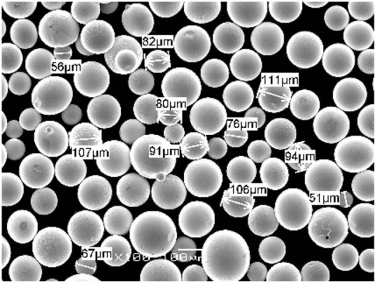
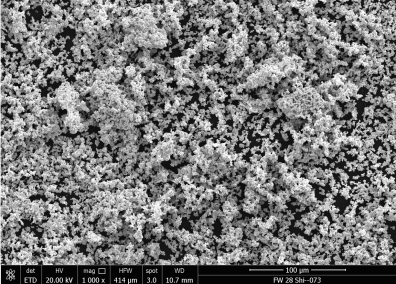
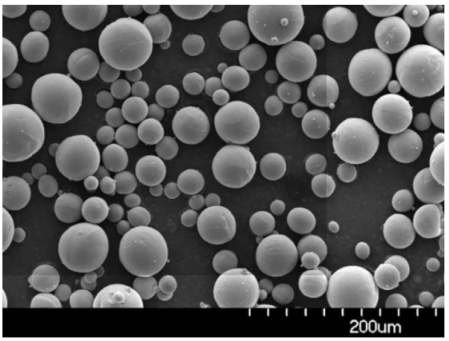
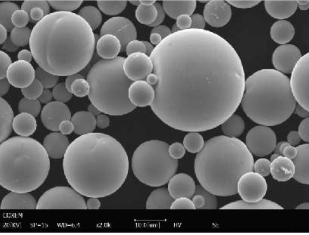
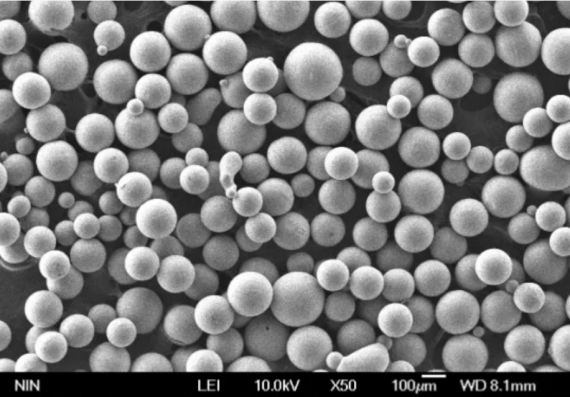
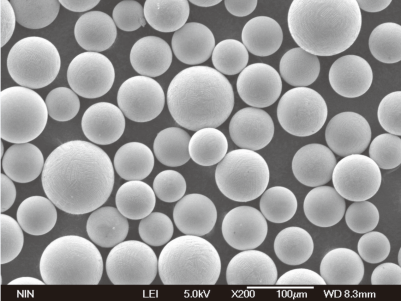
Tabela de Especificações
Aqui está uma comparação detalhada de graus, tamanhos e padrões para pós metálicos comumente usados em motores de foguete:
| Pó metálico | Grau | Tamanho da partícula | Pureza | Padrões |
|---|---|---|---|---|
| Inconel 718 | AMS 5662 | 15-45 mícrons | 99.9% | ASTM B213, AMS 5662 |
| Ti-6Al-4V | Grau 5 | 20-60 mícrons | 99.5% | ASTM F2924, ISO 5832-3 |
| AlSi10Mg | A360 | 10-50 mícrons | 99.8% | ISO 3522, ASTM B209 |
| Tungstênio | 99,95% Puro | 5-20 mícrons | 99.95% | ASTM B777, AMS 7848 |
Detalhes de fornecedores e preços
Visão Geral do Mercado
O mercado de pós metálicos de alta temperatura é tão dinâmico quanto a própria indústria aeroespacial. Com a crescente demanda por materiais avançados em motores de foguete, os fornecedores estão constantemente inovando para atender às necessidades de seus clientes.
Os preços dos pós metálicos podem variar significativamente com base em fatores como tipo de material, pureza e tamanho das partículas. Por exemplo, pós de metais refratários como o tungstênio são geralmente mais caros do que pós de alumínio ou titânio devido aos seus métodos complexos de extração e processamento.
Tabela de comparação de fornecedores
Para ajudá-lo a navegar no mercado, aqui está uma comparação de alguns fornecedores importantes:
| Fornecedor | Localização | Pós metálicos disponíveis | Faixa de preço (por kg) | Especialidades |
|---|---|---|---|---|
| Tecnologias de superfície da Praxair | EUA | Inconel 718, Ti-6Al-4V, AlSi10Mg | $50 – $150 | Pós de grau aeroespacial, ligas personalizadas |
| Höganäs AB | Suécia | NiCrMo, CoCrMo, AlSi10Mg | $40 – $130 | Pós de alta pureza, com certificação ISO |
| Tecnologia de Materiais Sandvik | Suécia | Tungstênio, Molibdênio, ligas de | $70 – $200 | Metais refratários, fabricação aditiva |
| Tecnologia Carpenter | EUA | Inconel, Stellite 6B, Ti-Al-Nb | $60 – $180 | Ligas especiais, padrões aeroespaciais |
Vantagens e Limitações de Pós Metálicos para Altas Temperaturas
Prós do Uso de Pós Metálicos
Os pós metálicos estão revolucionando a indústria aeroespacial, mas o que exatamente os torna tão especiais? Aqui estão algumas das principais vantagens:
- Desempenho Aprimorado do Motor: Os pós metálicos permitem a produção de componentes com propriedades mecânicas superiores, como alta resistência e resistência ao calor, contribuindo diretamente para o desempenho geral dos motores de foguete.
- Longevidade e Durabilidade: Componentes feitos de pós metálicos para altas temperaturas são menos propensos ao desgaste, prolongando a vida útil dos motores de foguete e reduzindo a necessidade de manutenção frequente.
- Eficiência de custo: Embora o custo inicial dos pós metálicos de alta qualidade possa ser alto, a economia a longo prazo devido à redução da manutenção e ao desempenho aprimorado os torna uma escolha econômica.
Contras e Desafios
No entanto, como qualquer tecnologia, os pós metálicos têm suas limitações:
- Complexidades de fabricação: A produção de componentes a partir de pós metálicos requer técnicas de fabricação avançadas, como metalurgia do pó ou fabricação aditiva, que podem ser complexas e caras.
- Implicações de custo: O custo das matérias-primas e o equipamento especializado necessário para o processamento de pós metálicos podem ser proibitivos, especialmente para operações em pequena escala.
- Problemas de Disponibilidade: Alguns pós metálicos, particularmente aqueles à base de metais refratários, podem ser difíceis de obter devido à disponibilidade limitada e à alta demanda em outras indústrias.
Tabela de comparação
Aqui está uma comparação das vantagens e limitações de vários pós metálicos:
| Pó metálico | Vantagens | Limitações |
|---|---|---|
| Inconel 718 | Estabilidade em altas temperaturas, resistência à corrosão | Caro, requer técnicas de fabricação avançadas |
| Ti-6Al-4V | Excelente relação resistência-peso, amplamente disponível | Propenso à oxidação em altas temperaturas |
| AlSi10Mg | Leve, boa usinabilidade | Menor resistência em comparação com outras ligas |
| Tungstênio | Resistência extrema ao calor, alta densidade | Alto custo, difícil de processar |
Tendências Futuras em Materiais para Motores de Foguete de Alta Temperatura
Tecnologias Emergentes
O futuro de motor de foguete de alta temperatura os materiais é tão brilhante quanto os foguetes que eles ajudam a impulsionar. Várias tecnologias emergentes estão prontas para levar a indústria a novos patamares:
- Novas Ligas Metálicas e Compósitos: Os pesquisadores estão continuamente desenvolvendo novas ligas que oferecem ainda maior resistência ao calor e propriedades mecânicas. Por exemplo, as ligas de alta entropia (HEAs) são uma nova classe promissora de materiais que pode revolucionar o projeto de motores de foguete.
- Fabricação Aditiva e Impressão 3D: A fabricação aditiva, também conhecida como impressão 3D, está mudando a forma como pensamos sobre a fabricação de componentes de motores de foguete. Ao permitir a criação de geometrias complexas que seriam impossíveis com os métodos de fabricação tradicionais, a impressão 3D está abrindo caminho para projetos de motores mais eficientes e leves.
Desenvolvimentos Previstos
Olhando para o futuro, várias tendências importantes provavelmente moldarão o futuro dos materiais para motores de foguete:
- Uso Aumentado de Compósitos: Embora os pós metálicos continuem a desempenhar um papel crucial, os materiais compósitos que combinam metais com cerâmicas ou polímeros podem oferecer vantagens de desempenho ainda maiores.
- Fabricação sustentável: À medida que a indústria aeroespacial lida com preocupações ambientais, haverá uma maior ênfase no desenvolvimento de processos de fabricação sustentáveis para pós metálicos.
- Revestimentos Avançados: O desenvolvimento de novos revestimentos que podem melhorar ainda mais o desempenho dos pós metálicos em ambientes extremos será outra área de foco.
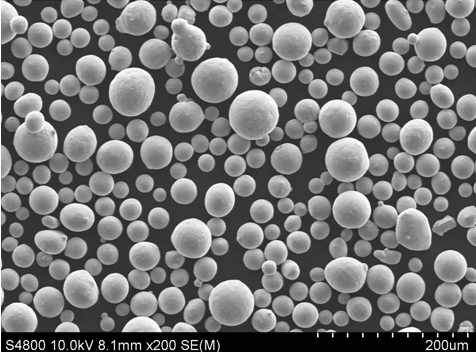
Perguntas frequentes
| Pergunta | Resposta | Notas adicionais |
|---|---|---|
| O que torna um material adequado para altas temperaturas? | Um material deve ter um alto ponto de fusão, excelente estabilidade térmica e resistência à oxidação e corrosão. | Essas propriedades são frequentemente alcançadas por meio de processos cuidadosos de liga e tratamento térmico. |
| Como os pós metálicos melhoram o desempenho do motor de foguete? | Os pós metálicos permitem a produção de componentes com propriedades mecânicas superiores, o que contribui diretamente para o desempenho e eficiência geral do motor. | Técnicas de fabricação avançadas, como metalurgia do pó, são frequentemente usadas para criar essas peças de alto desempenho. |
| Quais são os desafios na obtenção desses materiais? | Alguns pós metálicos, especialmente aqueles à base de metais refratários, podem ser difíceis de obter devido à disponibilidade limitada e à alta demanda em outras indústrias. | O custo e a complexidade do processamento desses materiais também podem ser uma barreira. |
| Existem preocupações ambientais relacionadas à produção de pó metálico? | Sim, a extração e o processamento de pós metálicos podem ter impactos ambientais significativos, particularmente em termos de consumo de energia e geração de resíduos. | No entanto, os avanços nas práticas de fabricação sustentável estão ajudando a mitigar essas preocupações. |

